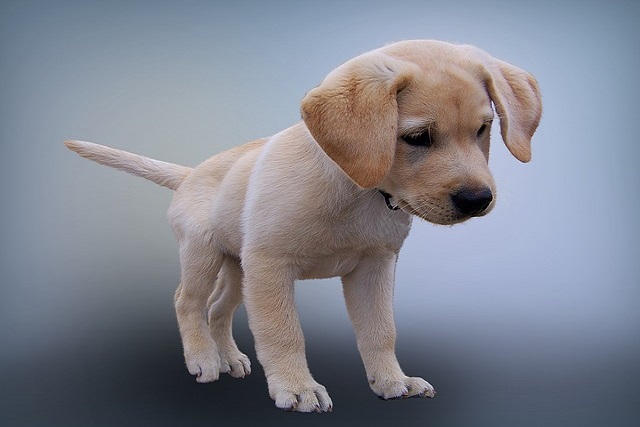
What is glaucoma in a dog?
You might notice your dog squinting more at mealtime or avoiding bright sunlight—these small changes could be early signs of a serious eye condition.
How to improve a dog's coat condition? If you’ve run your hand through your poodle “Luna’s” fur lately and noticed it feels more like straw than silk—dull, dry, with little tangles catching on your fingers—you’re not alone. A lackluster coat isn’t just a cosmetic issue; it’s often a clue that your pup’s not feeling their best. Whether your dog has short, sleek fur or a long, fluffy coat, turning that lackluster look around is easier than you think. Let’s break down how to get their fur shining and healthy.
A dog’s coat is a reflection of their inner health. Under that layer of fur, their skin produces natural oils that keep hair soft, waterproof, and shiny. When those oils are out of balance—from dry air, poor diet, or harsh grooming—fur turns dull, brittle, or greasy. Think of it like your own hair: skip conditioner, and it gets frizzy; eat junk food, and it loses its luster. For dogs, nutrients like omega-3 fatty acids (found in fish oil) and protein are the “conditioner” for their coats. A vet in Texas once told me, “You can brush a dog all day, but if their diet’s missing key nutrients, their coat will never look great.”
Start with their bowl. Swap out generic kibble for a food with high-quality protein (look for “chicken” or “salmon” as the first ingredient, not “meat by-products”) and added omega-3s. My neighbor in Colorado did this for her husky “Koda,” who had patchy fur; within 6 weeks, his coat was so thick and shiny, people stopped her on walks to ask what she was feeding him. For an extra boost, add a teaspoon of fish oil to their meals—most dogs love the taste, and it’s like a superfood for their skin. Just check with your vet first to avoid overdoing it.

Grooming matters, but it’s about quality, not quantity. Brush your dog 2-3 times a week with a brush that fits their coat: a rubber curry comb for short-haired breeds (like labs) to massage skin and distribute oils, or a slicker brush for long-haired pups (like shih tzus) to tackle tangles. Make it a happy ritual: start with 5-minute sessions, offer treats, and talk to them in a calm, upbeat voice. Positive reinforcement turns brushing from a chore into bonding time—my cousin’s rescue “Rocky” used to hide from the brush, but now he wags his tail when he sees it, knowing treats are coming.
Bathe them sparingly—overwashing strips away those natural oils. Most dogs need a bath every 4-6 weeks, using a dog-specific shampoo (human shampoo is too harsh). Rinse thoroughly—leftover soap dries out skin. Afterward, towel-dry or use a low-heat blow dryer; damp fur can lead to mats and irritation.
Healthy coats tie into responsible pet care. Keep your dog’s rabies vaccine current—required by 4 months in all U.S. states, with fines up to $500 in Los Angeles. A healthy dog’s immune system supports better skin and fur, so stay on schedule. When walking, always carry poop bags (fines in Chicago hit $250 for skipping) and brush your pup lightly after if they rolled in dirt—this keeps your home cleaner and their coat from matting.
Apartment dwellers, invest in a lint roller (trust me, you’ll need it) and brush your dog near a hard floor for easy cleanup. At dog parks, avoid letting them roll in mud or grass clippings—fun as it is, it can lead to tangles that damage fur. And never yank a brush through mats—use a detangler spray and work slowly, or ask a groomer for help.
With a little time and the right care, your dog’s coat will transform. When Luna trots over, her fur soft and glowing under the light, and you run your hand through it without catching a single tangle? That’s the best sign—proof that a little love in their bowl and brush goes a long way.

You might notice your dog squinting more at mealtime or avoiding bright sunlight—these small changes could be early signs of a serious eye condition.

Let’s set the scene: It’s a sweltering Phoenix afternoon—105°F outside—and you rushed your 2-year-old Lab mix, Cooper, on a quick walk to “get it over with.”

Let’s get real: You’re in your Miami apartment, watching your 3-year-old Corgi, Loki, struggle to climb the stairs to your second-floor unit.

Many dog owners brush off occasional scratching as just “dog behavior,” but persistent itching often signals something more—like a food allergy.

You might first notice your dog scratching more than usual—chewing at their paws until the fur looks thin, or rubbing their face against the couch nonstop.

Let’s be real: You’re standing in your Chicago apartment, watching your 3-year-old Beagle, Max, huff and puff just to climb onto the couch.